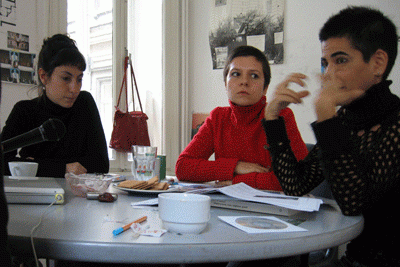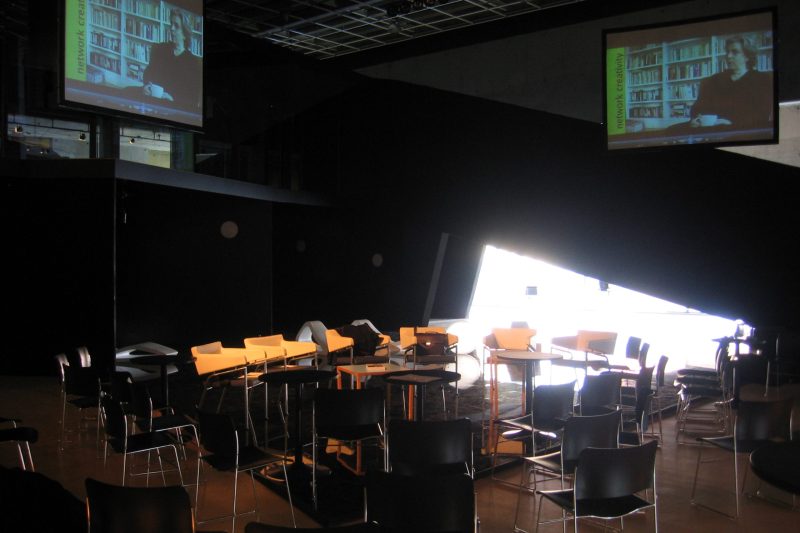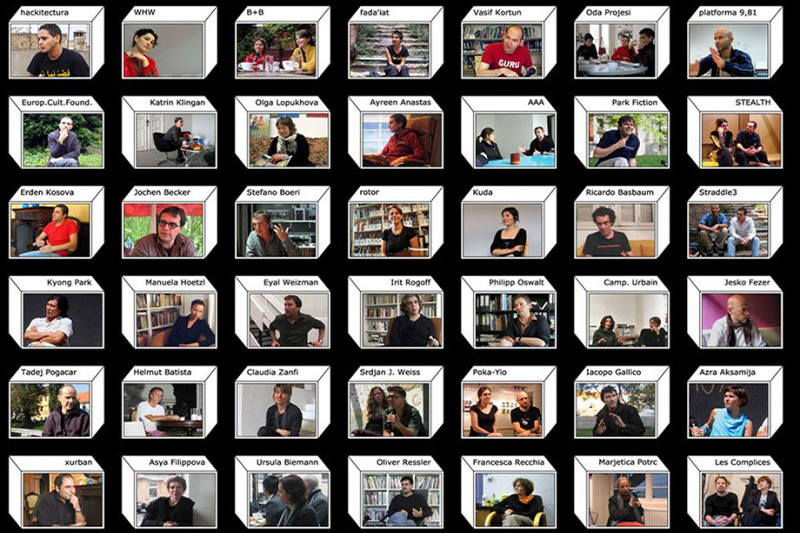- Interview
- Vector, Iasi
- 01.08.2006
- NETWORKED CULTURES
CONVERSATION WITH MATEI BEJENARU
PM/HM: In 1997 you initiated the Periferic – International Biennial for Contemporary Art in Iasi. Given this programmatic name for a biennial, how can one approach “peripheries” in
the context of globalised art production?
Matei Bejenaru: Iasi is in northeastern Romania and has about 400 000 people. It has its own history, which might be seen from one perspective as a sad history, because the city lost everything it once had. It used to be the capital of Moldavia. The kingdom of Moldavia came into being in the Middle Ages and, with the advent of modern times, slowly disappeared. In the mid-nineteenth century, Iasi was still more emancipated than Bucharest. The idea to build a modern Romanian state was born in Iasi and when it happened in the 1860s, the capital was moved to Bucharest. It was then that Iasi began losing influence and power, and Bucharest began growing. Romania didn’t undergo industrial development until the late nineteenth century. Bucharest became a large city, while Iasi remained a small patriarchal and archaic place. Nowadays it’s an interesting town with its own dynamics and different layers of culture – but it obviously didn’t have the same chance to develop and modernise itself as Bucharest did. In my opinion, real modernisation began with communism. Iasi is somewhat isolated and provincial, but not to the point that people want to leave.
I studied art in Iasi in the first half of the 1990s, and after graduation other young artists from the city and I “invented” a small independent performance festival, called Periferic. From the very beginning it was a platform where we could affirm our artistic identity. In the first editions of the event we organised performances, as well as round tables and discussions about the status of art in our post-communist context. We tried to understand the potential of the place by relating our artistic practices to the local situation. Periferic grew more and more, and was transformed from a local festival to an international biennial of contemporary art. In 2001, we founded the Vector Association, a non-profit institution that now organises the biennial, runs a non-commercial gallery and publishes Vector Magazine. With its sixth and seventh editions, Periferic became a visible international art event in a place that was almost unknown. Now, we’re trying to decide whether we should keep a biennial format in the future or not. There are so many biennials everywhere…
We’re currently preparing Periferic 8, which will be held in October 2008. The curator is Dora Hegyi from Budapest, initiator of the Free School of Art Theory and Practice. The main topic will be “Art as a Gift”. Periferic 8 intends to examine the conditions under which art can be regarded as a gift, and what speculative components influence its realisation and social value.
PM/HM: As an institution the Vector Association plays an important role for the local scene, while Periferic connects Iasi with the international art circuit. Given the remoteness of Iasi in terms of the art world, how has it been possible to develop such a multi-layered structure?
Matei Bejenaru: I think it has developed gradually. First we established links with artists within Romania; then we slowly expanded by inviting artists from eastern Europe: from Hungary, Poland, Ukraine, Moldavia, Bulgaria and Turkey. After three or four editions, we’d established a network, but that network was based on personal relationships. Since 2002, I think this network has grown due to the Vector Association. For example, you didn’t come here because we knew each other but because you’d heard about the project, about the fact that there was an institution where you could meet people and get information. Since 2002, the event has a certain level of international visibility and this attracts people, especially people from the art world and professionals who are interested in Romania. If you google “Romania” in combination with “contemporary art”, “Vector” and “Periferic” will appear. And if you take a look at our website, you’ll quickly see the event has been around for about ten years now.
I think we’re the most organised structure in Iasi to promote and debate contemporary art. There are some other independent young groups of artists – which is very good – but they don’t have enough power to exist as institutions or to attract enough resources to develop projects. We have our own network in Romania and abroad. We’re connected to different structures and different projects. It isn’t easy, because we’re in a transitional phase at the moment. Until now we’ve received a lot of money from abroad. We understand that for future development, for a medium- and long-term strategy, we need to find local resources. The Romanian economy is growing; there’s more money available, even if it’s not earmarked for contemporary art, and we have to fight to attract sponsors.
We want to continue developing educational programmes, for this is what we’ve being doing for a few years now. The idea is to stimulate an interest, a dialogue, and create an educated audience who needs this kind of culture. This will also encourage more sophisticated artistic production. This is important at the moment, because after we join the European Union in January 2007, we won’t be receiving the same funds as we are now, though the transition will take a year or two. We need to understand exactly the kinds of money we’re going to have to raise. Probably local money, from the municipality or from local sponsors… The City Council of Iasi has to support us – they can’t really ignore us. Even if they don’t understand what we’re doing, they know we’re enhancing the city’s image and bringing in a lot of sophisticated people who are writing about Iasi.
PM/HM: How do you think this will change in light of Romania joining the EU, in other words, what impact will EU spatial policies have on your work in Iasi?
Matei Bejenaru: I don’t think there’ll be another EU enlargement towards the east in the next ten years. And I don’t think it will be easy to integrate the Republic of Moldavia, on Romania’s eastern border, just twenty kilometres from here. It will also be hard for Ukraine, which is another big neighbour. But Iasi might become a place of exchange for different structures and groups of artists from these neighbouring countries. More money will become available, and this will lead to the development of institutions and programmes related to regional cultural collaboration.
In 2006, we started a system of residencies, called Backyard Residency, a project with Novi Sad, Belgrade, Istanbul and Iasi. The aim is to encourage regional mobility and enable the exchange of ideas, because it’s important for us to establish a stronger art network in the region. Unfortunately, at present, we don’t know much about each other. Romanians know very little about Macedonians, Bosnians know almost nothing about Romanians, and the Serbs have probably never travelled to Romania before. Both the Bulgarians and the Romanians are focussing too much on Brussels – they’re now in a hurry to learn how to eat at the same table and follow the same rules of etiquette as Europe.

Matei Bejenaru
is an artist and initiator of the Periferic Biennial in Iasi, Romania. Established in 1997 as a performance festival, Periferic has evolved into an international contemporary art biennial that offers a platform for discussions on the historical, socio-political and cultural context of Iasi. Together with a group of artists and philosophers from Iasi, Bejenaru founded the contemporary art institution Vector Association in 2001 and is also a member of the editorial board of Vector, a publication dedicated to the artistic and cultural situation in the transition countries of south-eastern Europe and in the Middle East. In 2005, he published and exhibited a Travel Guide for illegal Romanian workers. Most recently, he developed the project Impreuna/Together (2007), which involves the Romanian community in the UK and was shown at Tate Modern London.


